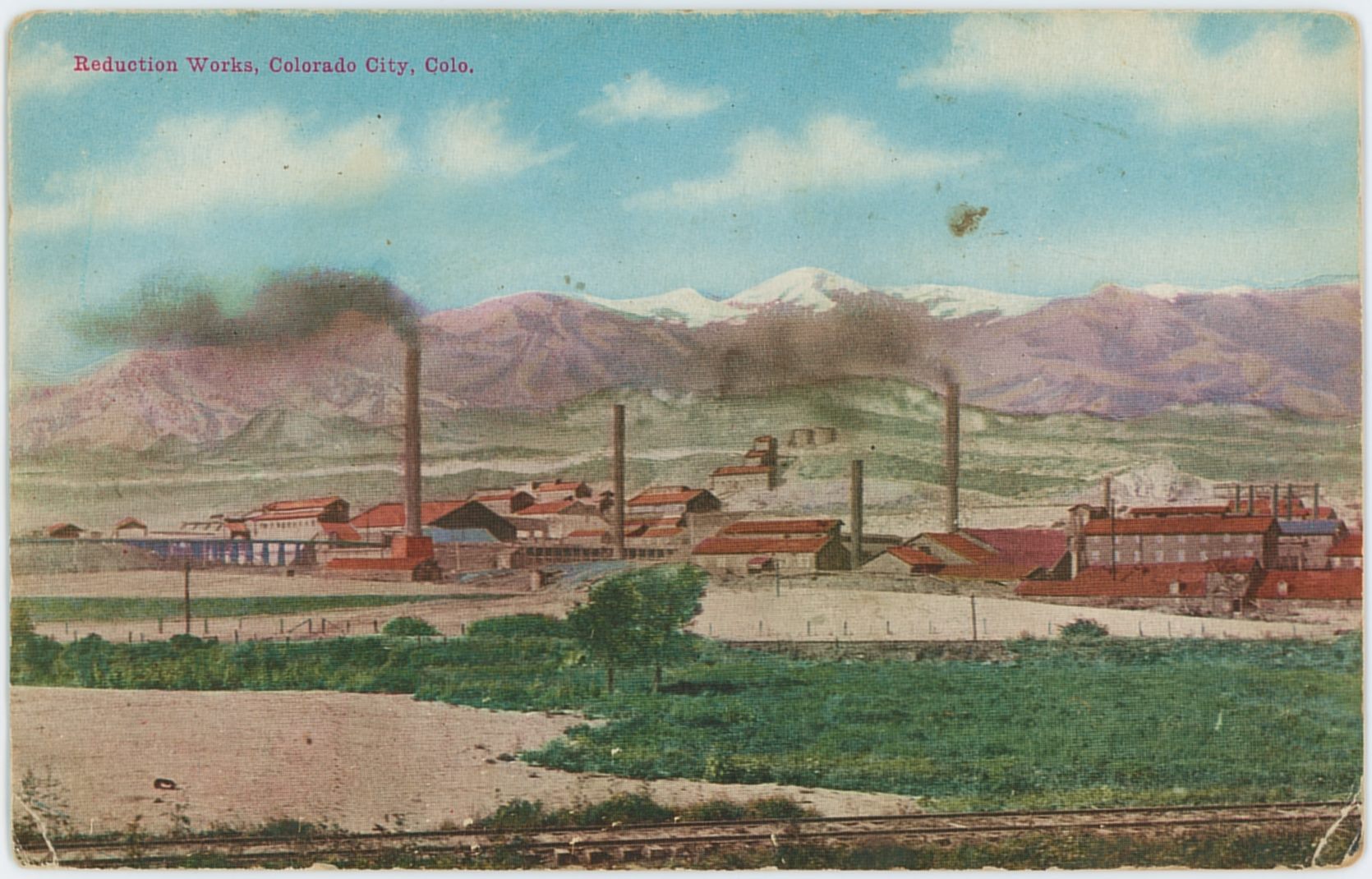-> My Collection; No source to show as I've not scanned the Mining Journal as an album.
But, here is a link to the first page on the Hathi Trust Digital Library website.
December 24, 1921 (pages 893-894)
Source had no images, so I used some images from my collection.
Abstracted and slightly rewritten from source text/article, only focusing on the pieces related to the Cripple Creek District.
The discovery, in 1891, of the telluride ores of gold at Cripple Creek introduced entirely new metallurgical problems, stamp milling and amalgamation was tried first on the ores that were not rich enough to ship to the smelters at Denver and Pueblo.
Ten mills, with an aggregate of 270 stamps, were built during 1892 and 1893, but, even with the addition of percussion tables and blankets, the saving was bad. The free gold would not amalgamate satisfactorily, owing to a tarnish supposed to be tellurite of iron.
As depth was attained and unoxidized ore appeared, the extraction became worse and the method was abandoned.16
The first chlorination plant was built by Edward Holden in 1893, but the first well-designed mill to use this proccess was not completed until January 1895. It was situated at Gillett. Experiments were being made contemporaneously with cyanidation, and there was great rivalry between the advocates of the two procesees.
Until about 1910, chlorination was the more successful; then the improvements in cyanidation gave the latter proccess the advantage.
The barrel-chlorination process, as used in the various mills treating Cripple Creek ore, consisted in crushing dry to about 20-mesh, roasting in mechanical roasters to about 1600 F., and treating with electrically generated chlorine in barrels. The tailings from the chlorination barrels were treated on Wiltley tables, the concentrate, representing about 0.04 of the pulp, being sent to the smelters.
The solution, filtered from the pulp in the barrels, went to vats in which the gold was precipitated by hydrogen sulphide.17
The chlorination mills in the district and at Florence were closed one after the other, and the reduction of the Cripple Creek ores became centred in three mills at Colorado Springs.
The United States Reduction & Refining Co. had two plants there, namely, the Philadelphia, built in 1896 and closed in 1904, and the Standard, built in 1901 and closed in 1910. The rotary-scoop feeder, now almost universally employed on tube and hall-mills, was invented and first used at the Standard mill.
The Telluride mill was built as a bromination plant in 1899; it was changed to chlorination in 1904, and closed in 1906. In 1908 it was purchased by the Golden Cycle company and re-opened as a cyanide mill. It is the only plant at Colorado Springs still in operation.
The Portland Gold Mining Co. built a chlorination plant at Colorado Springs in 1902; it was changed to cyanidation in 1912 and closed in 1918.
The Portland company introduced fine grinding in cyanide solution, without roasting; agitation; and zincdust precipitation in its Victor mill, built at the mine in 1910.
The Independence mill of the same company, also situated near the mine, embodying many improvements, was opened in 1917 and is still in successful operation.
The Victor mill was closed in 1918. Several innovations have been worked out at these mills, the most important of which is the Crowe vacuum-precipitation process, which has been adopted in many other cyanide plants.18
Sources:
16;
Rickard, T. A. "The Cripple Creek Gold-Field", Trans. I. M. & M., Vol. 8, London, 1899
Lindgren, W., and Ransome. F. L., "Geology and gold deposits of the Cripple Creek district, Colorado", U.S.G.S., Prof. Paper No. 54, p. 138, 1906
17;
Lindgren, W., and Ransome. F. L., "Geology and gold deposits of the Cripple Creek district, Colorado", U.S.G.S., Prof. Paper No. 54, p. 138, 1906
18;
Crowe, T.R., "Effect of oxygen on precipitation of metals from cyanide solutions", Trans. A. I. M. & M. E., Vol. 60, p. 111, 1919.


![Photo by: Julia Skolas | Click for larger view, more info View at Portland Mill on Battle Mountain [Faded]](/04library/images/mine/p-03668_battle-mtn,portland-mill2_faded_enhanced_twstd_crpd.jpg)